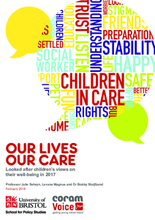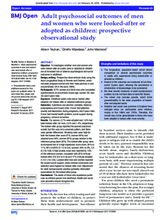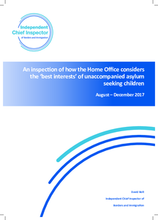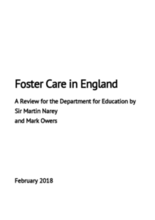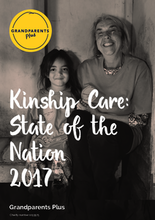Displaying 801 - 810 of 1161
This paper examines the longer term outcomes of young people who experienced out of home care (OHC) as children, in Britain, Germany and Finland, countries characterised by different welfare regimes.
This report from the University of Bristol School for Poicy Studies and Coram Voice presents findings from a 2017 survey, in which 2,263 looked after children and young people from 16 local authorities in the United Kingdom completed the ‘Your Life, Your Care’ survey to determine their subjective, self-reported wellbeing.
This chapter raises questions about the use of unregulated websites and the commodification of children that seek forever families, how far adoption in the digital age will be further redefined remains to be seen.
The objective of this study was to investigate whether men and women who were looked-after (in public care) or adopted as children are at increased risk of adverse psychological and social outcomes in adulthood.
This inspection by the Independent Chief Inspector of Borders and Immigration in the UK examined how the Home Office considers the ‘best interests’ of unaccompanied asylum seeking children.
This paper presents a community based participatory research project, which adopted a photovoice approach with seven unaccompanied asylum-seeking children (UASC) living in foster care in the United Kingdom.
This review analyzes and critiques the foster care system in England, offering recommendations for improving the system.
This report is based on a survey of members of the Grandparents Plus Kinship Care Support Network, which includes almost 4,000 kinship carers in the UK.
This study evaluates the ‘Nurturing Attachment’ program in the UK, a Dyadic Developmental Psychotherapy intervention for adoptive families.
In this piece, Robert Halfon, the Chair of the UK Parliament's Education Select Committee, writes that England's foster care system is failing vulnerable children.

